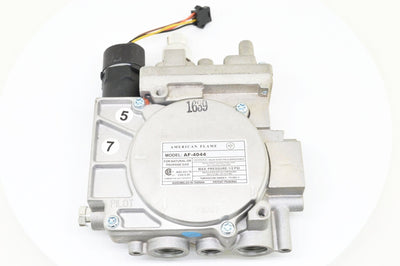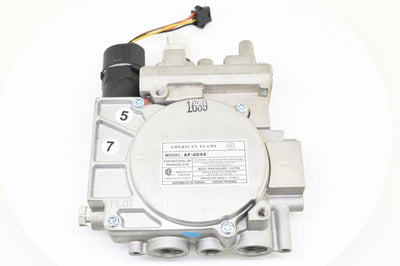Patio Heater Buying Guide
Patio heaters function much like the sun, transferring warmth to your outdoor space and objects around effectively. They come in a variety of style, all capable of matching your space and heating needs. Regardless of the style, they all come fitted with a dome-shaped reflector responsible for the heat radiation.
Buying a patio heater is a great investment and a tricky one at that; you need to be equipped with the relevant information to make a wise choice. Thus, we have come up with this patio heater buying guide that details all you need to know about patio heaters.
Nother 48000 BTU Propane Patio Heater with Adjustable Thermostat, Cover and Wheels.

About Patio Heaters
Patio heaters are outdoor appliances that utilize radiant heat, a heat transfer form to give warmth to objects around. Radiant heat does not need a medium for its propagation; it is transferred directly to persons or objects and is the most efficient way to heat any outdoor space.
Patio heaters are equipped with a dome-shaped piece of metal called the reflector panel. This reflector panel is located behind or on top of the heating unit, and its purpose is to reflect heat to the areas in its part. There are a lot of things to consider when purchasing patio heaters. Let’s shine the light on a few of them, shall we?
Things to Consider When Buying a Patio Heater
1. Your Preferred Style of Patio Heater
Patio heaters come in different styles, four main styles to be precise. They are: free-standing, ceiling or wall-mounted, flush-mount or recessed and post or ground mount patio heaters. Let’s highlight the features of each quickly, shall we?
❖ Free-Standing Patio Heater
Free-Standing Patio Heaters typically run on gas, not electricity. They are portable and equipped with a tilt switch. They supply heat to your outdoor environment via their reflector panel and are efficient and low maintenance heat transfer options.
❖ Wall/Ceiling Mounted Patio Heater
Wall/Ceiling Mounted Patio Heater heat your outdoor space as effectively as any other patio heater style. They can either be gas or electricity fueled. The major difference is unlike the free-standing patio heater that takes up much space, the wall-mounted patio heater is mounted on the ceiling or wall and takes up less space. It is very easy to operate.
❖ Flush mounted/ Recessed Patio Heater
The Wall/Ceiling Mounted Patio Heater runs on electricity only and is installed flush with the ceiling. It is hardwired and can be grouped into sub heating zones. It effectively distributes much-needed warmth to objects in its path.
❖ Ground/Post Mounted Patio Heater
The Ground or post mounted patio heater is designed to supply heat to your outdoor space using natural gas as its only fuel source. It is fixed to the ground or a post and cannot be removed from that point; thus, it offers you limited flexibility in terms of movement. Thanks to its fuel source, natural gas, you never have to refuel ground-mounted patio heaters because it is connected directly to your fuel supply.
2. Type of Fuel
One of the things you must pay attention to when buying a patio heater is the fuel supply it uses. Each fueling type has its own advantages and disadvantages. So you must weigh each to find which best suits your heating needs.
❖ Electric Patio Heaters
Electric patio heaters can be used in outdoor and indoor spaces because they do not require any ventilation. They are highly effective and green thanks to their design of zero carbon emission. They are the easiest form of patio heater to set up and come in both mountable and free-standing styles.
Although a few electric patio heaters can be plugged into a 120-volt wall socket, most need a higher voltage to function effectively. If your electric patio heater requires more voltage, you will need to call a licensed professional to install the needed wiring.
A downside to electric patio heaters is that they must be mounted close to an electrical outlet. They also take longer to heat your outdoor space than propane or natural gas heaters.
Pros of Electric Patio Heaters
- They are smaller and lighter than gas patio heaters.
- They are environmentally friendly.
- Electric patio heaters are easy to handle, and most do not require a professional to set up.
- You can use them indoors and outdoors.
Cons
- Electric patio heaters are not as cost-effective as other patio heater models.
- They take longer to heat up.
- They are reliant on mains power.
❖ Gas Patio Heaters
Gas patio heaters are fueled either by natural gas or liquid propane. Let’s look at what each of these gas patio heater fueling options has to offer you.
❖ Liquid Propane Patio Heaters
Liquid propane patio heaters are portable and, as the name supply, use liquid propane gas to fuel their activities. They are easy to assemble and can be up and running in a matter of minutes. Once you have successfully installed the propane patio heater, the next thing to do is attach the propane tank and check for leaks.
You can stash the propane tank away from sight at the base of the patio heater. Since it is portable, you can move the heater around whenever you wish; however, wall mounted propane patio heaters will require a permanent gas line to connect the heater to a large propane tank.
The danger with a propane patio heater is that your whole house can go up in flames if not done correctly. Thus, we advise that you seek the help of a licensed professional for the installation.
Natural Gas Patio Heater
Natural gas patio heaters don’t offer you as much flexibility in movement as propane patio heaters do. They are either mounted to the ground or wall/ceiling mounted and connected to your house’s main gas supply. Thus, you never have to refill your natural gas patio heater.
Natural gas patio heaters are pretty easy to install and maintain. However, if you do not already have a fixed natural gas line, you will need to enlist the help of a licensed professional. The initial cost for natural gas patio heaters may be more than the other fuel types; however, the cost evens out over time and can even go lower than that of propane patio heaters.
Pros of Gas Patio Heaters
- Gas patio heaters provide powerful and reliable heating for your outdoor space.
- They are not reliant on the mains power.
- They heat your outdoor space quickly and are more cost-efficient.
Cons
- Gas patio heaters emit toxic fumes and, as such, cannot be used indoors.
- They are not environment friendly.
3. Safety Features
Another tip when buying patio heaters is to watch out for the safety features they come equipped with. After all, there is no use buying something that could potentially lead to disaster. We advise that you look out for patio heaters that are UL approved and CSA tested. These certifications assure you that the patio heater has undergone rigorous testing and has been certified as a safe and reliable heating appliance.
Another patio heating safety feature is a tilt shut-off valve designed to automatically turn off the heater if it ever gets knocked over.
It is important to note that a patio heater that generates too much heat and bursts with flames is unsafe for use. Even though your patio heater comes with a tilt shut-off valve, it should still be sturdy and not one that falls over at the slightest motion.
4. Heat Capacity
Before you rush off to buy a patio heater, you must have an idea of how much heat you need on your patio. This will help you to select a patio heater with a matching heat capacity. Heat capacity for patio heaters is measured in BTUs. The higher the BTU, the more heat your patio heater is capable of supplying to your outdoor or indoor space.
A simple way to calculate how many BTUs you need to warm up your space is to use this equation. Cubic feet of area × desired temperature rise = Number of BTUs needed.
5. Design
If you live in the coastal regions or mountainous area, we advise that you choose a patio heater made of stainless steel. One reason for this is its durability. There is also the small fact that stainless steel patios are generally easy to maintain.
6. Cost
It does not always follow that the most expensive option is the best option out there. That being said, you must choose a patio heater within your budget range. Remember, the most important features are how well it suits your outdoor space needs and its durability.
Conclusion
Your patio is a great space to entertain guest or cool off during the summer months; however, during winter, the temperatures begin to plummet. A patio heater ensures that you stay warm and enjoy your outdoor time regardless of the season. There are several options and styles of patio heaters for you to choose from, and our simplified buying guide makes the process extremely easy. Go through the patio heater buying guide and select one that best works for you.
← Older Post Newer Post →





















